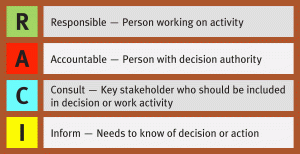Stay Safe using Public Wi-Fi -- Check list
First one must understand that Free Wi-Fi is a very big and easy target. And make no mistake. It takes zero hacking skills to secretly monitor or hijack your surfing on a public wireless network. Freeware makes eavesdropping on emails or web browsing as simple as pressing a button.
So how do you stay safe while using a free Wi-Fi connection? Steps 1 to 4 should be done before ever joining a public Wi-Fi and step 5 should also be done before or at the time of joining the public Wi-Fi when using Windows. Answers listed in order of importance!
Use common sense: You should treat all open networks as a security risk. Don't do any banking, online shopping, or other activities that would expose your private information. If you wouldn't be willing to share it with the public, it can wait until you get home.
Don’t Automatically Connect to Wi-Fi Hotspots: Your device may be set to automatically connect to any available Wi-Fi hotspot, a setting that can seriously endanger your privacy. But also allowing it to connect to known hot spots like attwifi can give hackers a door into your device (so after sipping your favorite drink at Starbucks forget that network)
Turn on your Firewall: Most laptops should have this enabled but make sure it is turned on.
Check the network name: In an attempt to lure you in, hackers might set up fake networks like "FREE Public Wi-Fi", or "Starbucks FREE." Check with the venue's employees to confirm the name of their network.
Turn off file sharing or select Public WI-FI: When on a Windows PC to turn off file sharing for that particular Wi-Fi network.
Protect your passwords with LastPass: Hackers can retrieve saved passwords from your computer or install keyloggers, which make your keyboard activity available to them. Keep them out with LastPass
Use a HTTPS Everywhere Plugin with Firefox or Chrome: You can create an encrypted connection with HTTPS Everywhere and once it is enabled, almost all website connections are secured.
Use a VPN: The most secure way to browse on a public network is to use a virtual private network. A VPN routes your traffic through a secure network even on public Wi-Fi. There are good free options.
One example of a Free VPN is VPNBook. It is completely free, with no bandwidth caps or service limitations. PC Mag Review below.
“Pros: No large software to install. Decent performance. PPTP support means it works on mobile devices and all modern OS. Free.
Cons: Unclear what encryption is being used. Not a lot of geographic diversity. Extra steps to install.
Bottom Line: VPNBook is a no-frills VPN service that just gets the job done, protects your data when you are connected to a wireless hotspot, anonymizes your connection to bypass censors, and change your location to access region-specific sites. Performance is solid, and it doesn't worry about advanced features.”
Reference:
http://blog.laptopmag.com/9-tips-to-stay-safe-on-public-wi-fi
http://howto.cnet.com/8301-11310_39-20034899-285/6-ways-to-use-public-wi-fi-hot-spots-safely/
http://www.forbes.com/sites/amadoudiallo/2014/03/04/hackers-love-public-wi-fi-but-you-can-make-it-safe/





















